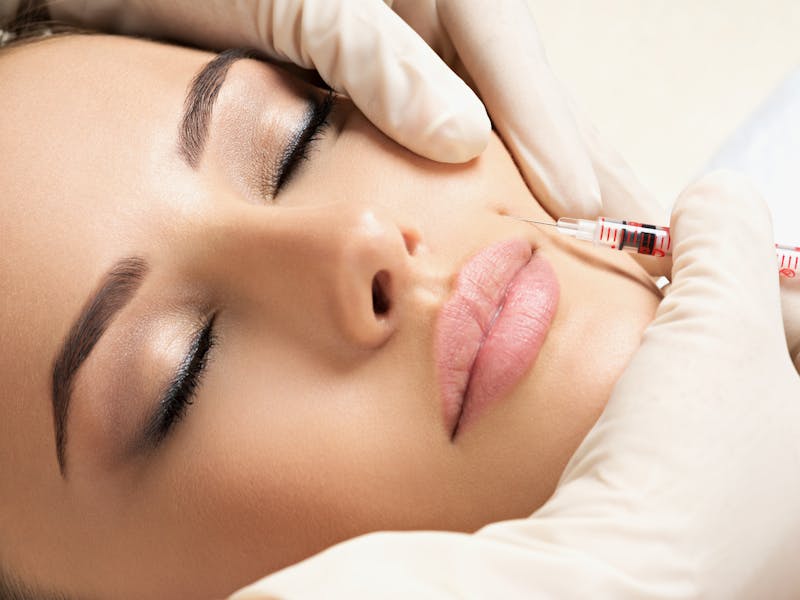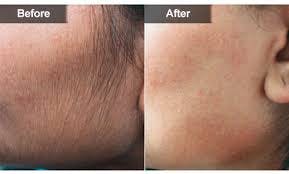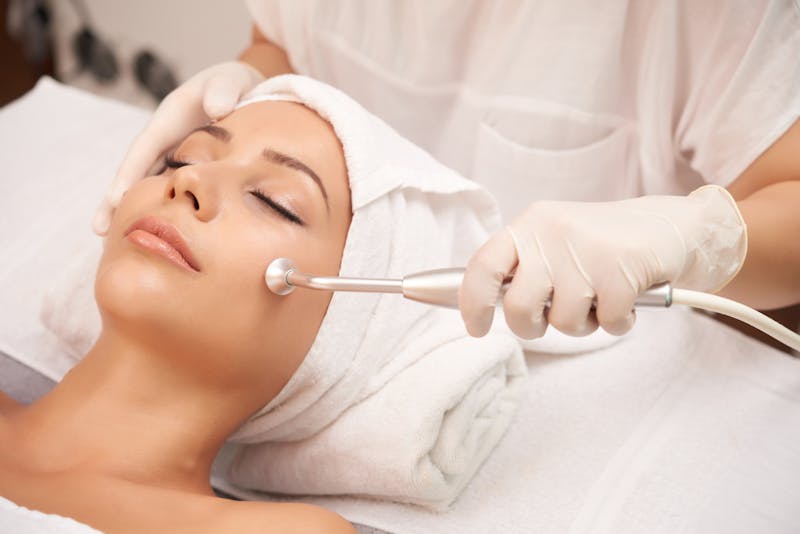Non Surgical Procedures
Botulinum Toxin
Botulinum toxin, also known as, Botox is a most popular anti- age procedure, used to diminish wrinkles and other signs of aging. It is an injectable agent that relaxes the facial muscles that cause wrinkles. Basically, Botox is a neurotoxin derived from Clostridium botulinum, an organism found in the natural environment where it is largely inactive and non-toxic. They are most often used in the forehead, between the brows, and for crow’s feet around the eyes.
Procedure
With a very small needle, Botox is injected into the muscles. When injected, it blocks nerve impulses from being sent to muscles, and as a result, the muscle does not contract. Because the procedure is quick and has minimal discomfort, no anesthesia is required. Sometimes doctor may numb the area with a cold pack or anesthetic cream prior to treatment. The discomfort can be minimized by use of ice packs if needed. Within a few days of treatment, patients will begin to see the results which may last for 4 – 5 months.
Botox works by stopping the muscle that it’s injected into from contracting, so it appears relaxed and smooth. It is available in injectable form and the dose of medication required depends on the area being treated. When injected it blocks the nerves that are responsible for muscle activity.

After care
- Patient should avoid rubbing the injected area for approximately 12 hours after treatment.
- The patient should exercise the injected areas by trying out natural facial expressions.
- Patient must limit physical activities.
- It is important not to bend forward after treatment,
- Avoiding alcohol may reduce the extent of bruising
- Bruising and swelling at the site of injection is very common. Applying an ice pack to this area may reduce the swelling and bruising.
Uses
Cosmetic use of botulinum toxin includes-
- Treating the vertical lines between the eyebrows.
- Treating crow’s feet at the corner of the eye.
- Treating bunny lines
- Achieving brow lift
- Reducing lip wrinkles
Benefits
- It is minimally invasive, relatively easy and quick to administer.
- It has an immediate and noticeable effect.
- Recovery period is quick.
- It is often more affordable than other cosmetic treatments.
Side effects
Side effects of Botox are minimal and can be easily managed. These can include-
- Swelling or bruising at the injection site.
- Numbness
- Drooping of the upper eyelid
- Nausea
- Headache
- Redness and tightness of skin.
- Dry mouth
Dermal Filler
Dermal fillers are a non-invasive injectable treatment used to treat scarring, facial lines, and rejuvenate the skin. It is one of the best non- surgical procedures to enhance the shape of the face because the procedure is immediate and with minimal side effects. It can be used to rejuvenate, contour and enhance areas such as lips, naso-labial folds, mid face, eyebrows. There are several types of dermal fillers, which range from temporary to permanent and vary in softness and material. These are injected into the skin to replace hyaluronic acid that has dissipated over time. Hyaluronic acid is what gives skin volume and fullness and provides a smoother contour to the face.
What dermal fillers can do?
-
Plump thin lips
-
Plump sagging hands
-
Enhance the contours of the face
-
Reduce wrinkles
-
Restore lost volume and smooth out lines
-
The treatment is fast and easy
Dermal filler material
The materials used in the dermal filler injection are as following-
- Hyaluronic acid
- Collagen
- Calcium hydroxylapatite
- Poly-L-lactic acid
- PMMA
Procedure
To administer dermal filler, surgeon will first examine the face and will mark the appropriate sites on the face. Then, the injection sites will be cleansed and anesthetized. Injections usually take only a few moments per site. Dermal filler are then injected directly into the marked area. The results of dermal fillers can last six to twelve months but this varies from one person to another.

After treatment
Recovery time varies for each patient and for each type of filler injected. An ice pack may be given to the patient to reduce swelling. Immediately following the dermal filler application, patient can return to light activity. It is advisable to avoid applying direct pressure onto the site for several hours after the procedure.
Risks
Complications of dental fillers are very minor. The risks involved may vary according to the dermal filler used. These include-
- Infection at the injection site
- Asymmetry
- Swelling & bruising
- Skin rash
- Lumps
- Itchiness
Laser Hair Removal
It is the process of hair removal by means of exposure to pulses of laser light that destroy the hair follicle. During laser hair removal, a highly concentrated laser beam passes through the skin to hair follicle. The intense heat of the laser damages the hair follicle, disabling hair growth without damaging the skin’s surface.
Benefits
- Lasers are very safe to be used in any part of the body. This may include armpits, legs, bikini line, face and other areas.
- It works on all skin tones. However, individuals with darker hair and lighter skin often experience better results.
- Compared to other procedures, like waxing or threading, laser hair removal is less painful.
- In many cases, patient experience permanent hair loss.
Procedure
Before the procedure, an assistant trims the hair to few millimeters. To reduce discomfort numbing gel can be applied. Next, the surgeon focuses a beam of high-energy light at the desired area. During this process, the follicles absorb the heat, which damages the follicle and makes it difficult for the hair to grow back. When the procedure is completed, patient might be given ice packs to ease any discomfort. It takes 2-3 weeks after the treatment to see a difference. Patient with darker skin may not respond as well and with lighter colored hair may require more treatments.

After the procedure
Patient might notice redness and swelling for the first few hours after the treatment. Icing the area may help.
The repeated treatments are usually necessary because hair growth and loss naturally occur in a cycle. The numbers of sessions that will be required to achieve desired results vary from person to person. Laser hair removal is less effective for hair colors that don’t absorb light well: gray, red, blond and white.
It is advised to avoid exposing the area to direct sunlight after the treatment.
Risks & Side effects
- Some normal side effects may occur after laser hair removal treatments, including itching, pink skin, redness, and swelling around the treatment area.
- In some cases laser treatment can trigger more growth.
- Permanent scarring or changes in skin color are rare.
- Laser hair removal might darken or lighten the skin.
Microdermabrasion
Microdermabrasion is a non invasive procedure that exfoliates and removes the dead outermost layer of skin. It can exfoliate the skin, reduce signs of aging, and make the skin appear more even. It can also correct wrinkles, acne scars, and hyperpigmentation. It is a very popular procedure because it works on both outer layer as well as the deep layer of the skin. The specialist sprays or rubs fine crystals onto the skin with a wand that gently exfoliates the surface. Multiple sessions may be required in some cases.
Procedure
Before the procedure starts the skin may be prepared and cleaned. It’s not necessary to use anesthesia or a numbing agent. A device will be applied to the face to abrade the outermost layer of skin. Afterwards, a moisturizer as well as sunscreen will be applied to the skin. Based on the device used; there are 2 basic types of microdermabrasion procedure:
- Diamond-tip microdermabrasion: It features the use of diamond-tipped machines and vacuum suction to extract debris from the pores and collect dead skin cells.
- Crystal microdermabrasion: This technique uses a wand to spray fine crystals over the face. The crystals and exfoliated skin particles are simultaneously vacuumed away through the same wand. Crystals are most often made from nontoxic aluminum oxide or organic sodium bicarbonate.

Benefits
The benefits of microdermabrasion are many. Some of them are-
- It removes dull skin, softens fine lines, reduces acne and pore size, and fades scars and brown spots.
- It is a non invasive procedure.
- It uses no chemicals and is the safest procedure.
- It stimulates circulation in the skin, delivering oxygen and nutrients to the cells as well as aiding detoxification.
Risks & side effects
The risk associated with microdermabrasion are minimal. Possible side effects include tenderness, redness, and minor bruising. Also, if improperly applied microdermabrasion crystals can enter patient’s eye.
Infection- If the procedure is performed under unsterile condition, there are chances of infection.
Recovery time
There is no down time or recovery period following microdermabrasion, patient generally experience immediate improvements. It is important to follow post- procedure instructions to maximize result.
- Keep new skin clean and moisturized.
- Keep your skin protected with sun block.
- It is advised to avoid wearing makeup immediately after treatment.
- Avoid direct sun exposure for at least seven days after treatment.
- Anti-inflammatory creams or cold compresses may be used to relieve the tenderness or burning sensation after the treatment.
Chemical peel
It is a non surgical cosmetic treatment used to peel away the skin’s top layer to improve the texture of the skin. A chemical solution is applied to the skin that causes it to exfoliate and eventually peel off. It can also improve sun-damaged and wrinkled skin. There are different types of peel – light, medium, and deep.
Superficial peels
It’s often called the “lunchtime peel”. It only penetrates the outermost layer of skin. It does not damage skin below the epidermis. It is recommended for skin brightening, to improve acne and hyperpigmentation. These peels are usually made from alpha hydroxy acid, but can also include glycolic acid, salicylic acid, and lactic acid. In superficial peels, minimal recovery time is required.
Medium peels
Medium peels reach to the superficial layer of the dermis, the deeper layer of the skin. It is used to improve age spots, freckles, moderate wrinkles and sun damage. It utilizes trichloroacetic acid to penetrate the skin.
Deep peels
It is the strongest type of chemical peel available. It reaches the deeper layer of dermis to remove damaged skin cells. The treatment removes moderate lines, freckles, and age spots. These often use carbolic acid (phenol) or trichloroacetic acid. Phenol is the strongest of all treatments and removes deep lines and wrinkles on the face.
Uses
Chemical peel can be used to treat variety of conditions including:
- Wrinkled or sun-damaged skin.
- Acne scars
- Aging skin
- Crow’s feet
- Scars
- Hyperpigmentation
Procedure
Doctor cleanses the skin and applies topical anesthetic to numb the area. The chemical peel solution is applied on the skin and left on for a few moments. Patient may experience tingling or stinging sensation as the chemical peel is applied. It is then washed off with water.

After treatment
Recovery time depends on the type of peel administered. After the treatment there may be redness, swelling and irritation. Doctor may prescribe medicines that will help relieve the problems.
Superficial peels
These require less recovery time. Initially, skin may be mildly irritated, red and swollen. Patients can return to their daily activities immediately after treatment.
Medium peels
It requires about 2 weeks to heal. Patient may experience redness, stinging and flaking of the skin. It is advised to avoid sun exposure and to use sunblock for several months.
Deep peels
Recovery time is longer with deep peels. The new layer of skin appears after 10 days of treatment. It is strictly advised to avoid sun exposure for several months.
Risks
Serious side effects are rare with chemical peel. However, if not performed correctly it may lead to several problems. Potential severe risks of chemical peel include scarring, chemical burns, permanent or temporary change in skin color.
Deep chemical peels are not recommended for patients with darker skin, because it might be able to cause permanent darkening or lightening of the skin. Also, there is a risk of anesthesia related complications.
DISCLAIMER
This web page provides general information and discussions about health, medicine and related subjects. The information and other content provided on this website, or in any linked materials, are not intended and should not be construed as medical advice, nor is the information a substitute for professional medical expertise or treatment.
The content is for information purpose only and is not a medical advice. Qualified doctors have gathered information from reputable sources; however Credence Medicure Corporation is not responsible for errors or omissions in reporting or explanations. No individual should use the information, resources and tools contained herein to self diagnose or self treat any medical condition.
If you or any other person has a medical concern, you should consult with your health care provider or seek other professional medical treatment. Never disregard professional medical advice or delay in seeking it because of something that have read on this blog or in any linked materials. If you think you may have a medical emergency, call your doctor or emergency services immediately.
The opinions and views expressed on this blog and website have no relation to those of any academic, hospital, health practice or other institution. Credence Medicure Corporation gives no assurance or warranty regarding the accuracy, timeliness or applicability of the content.
